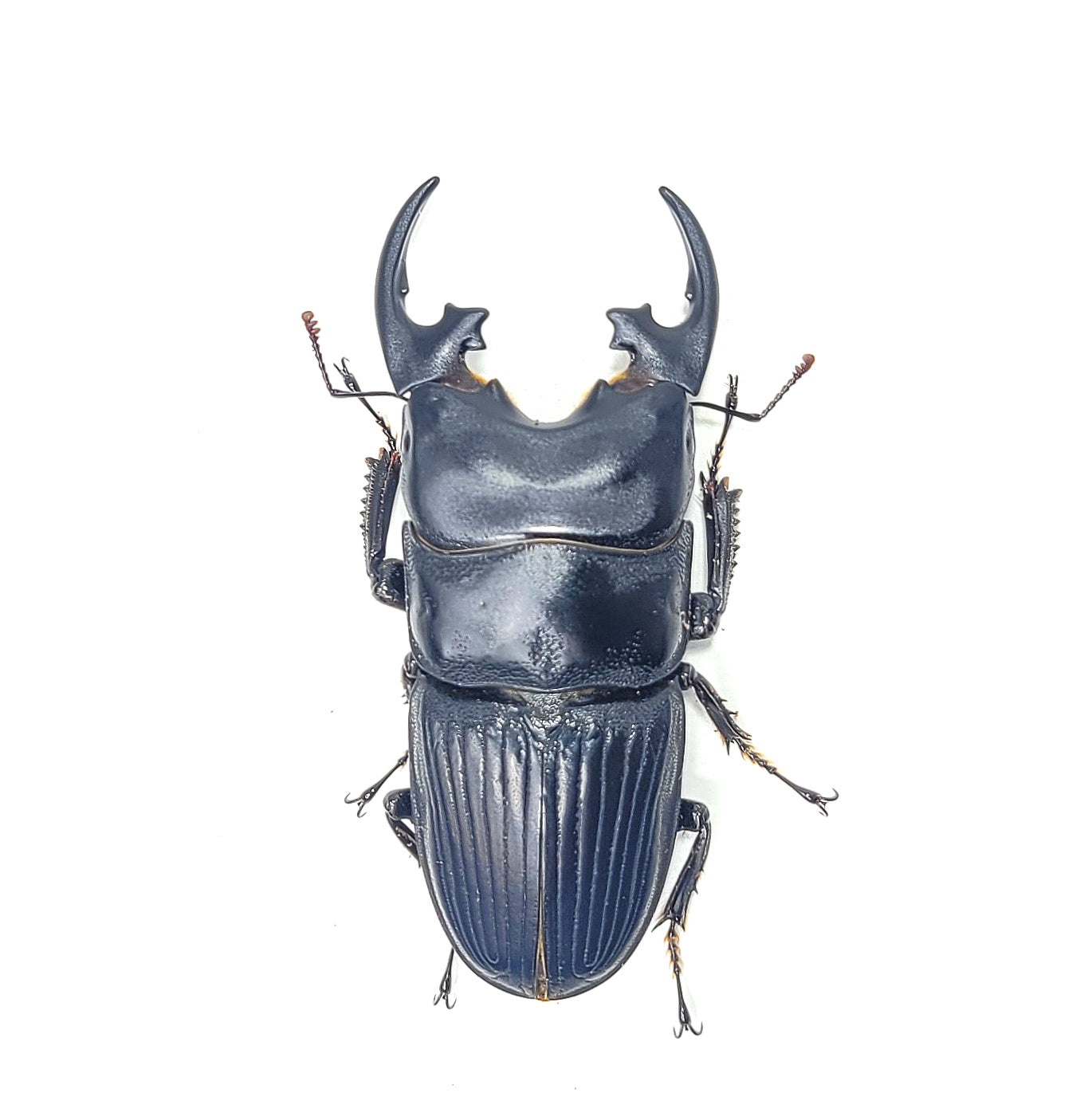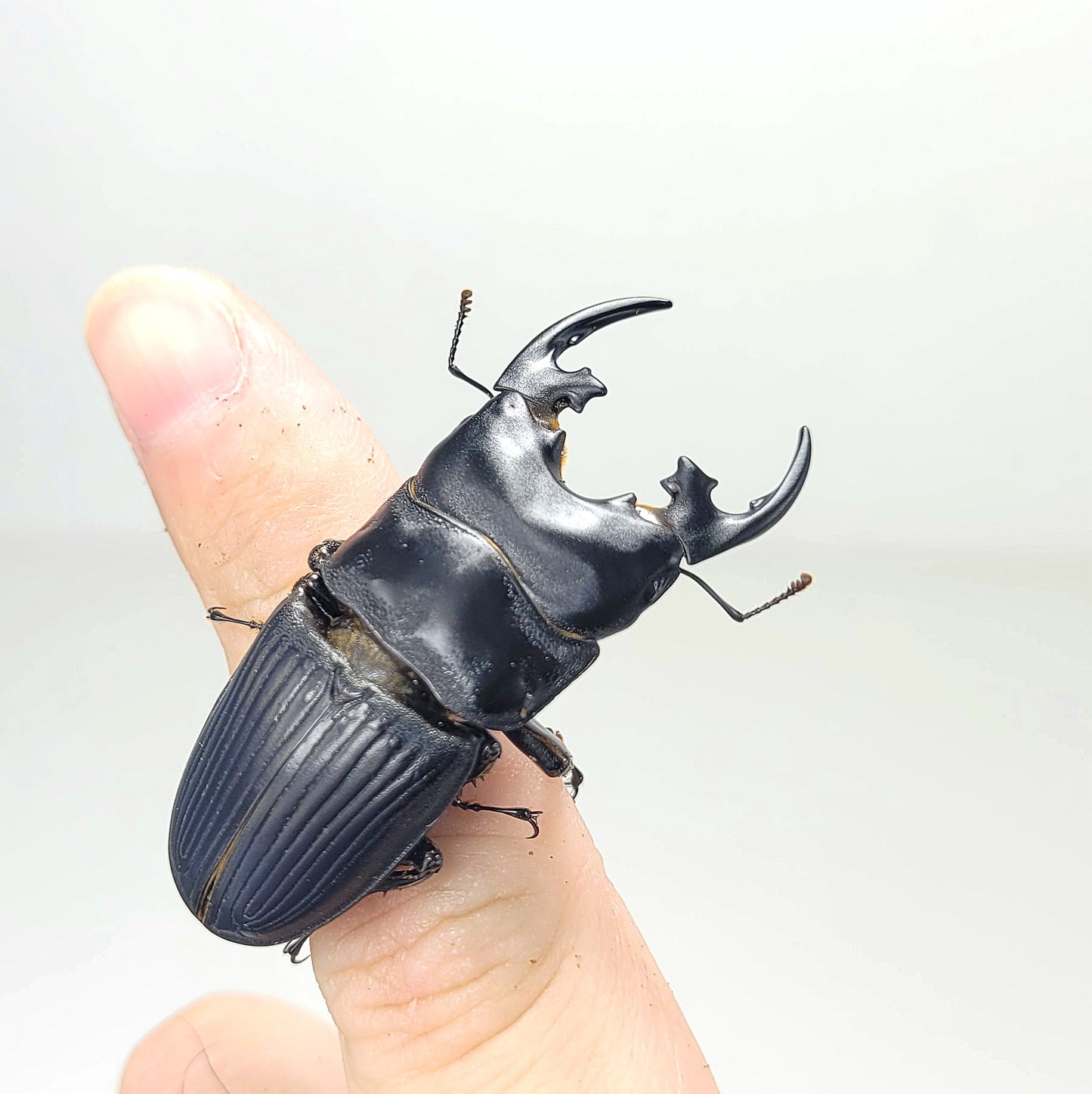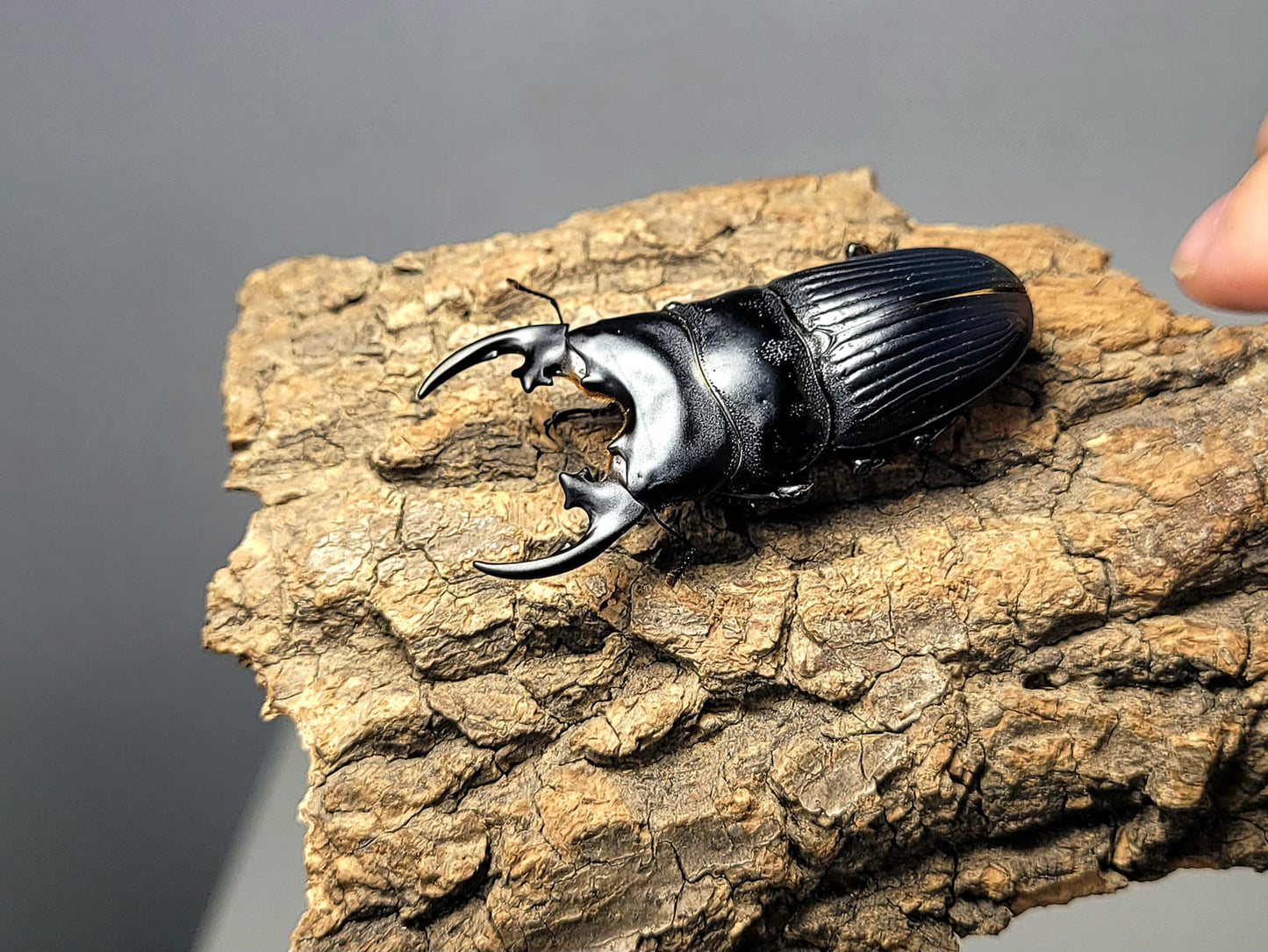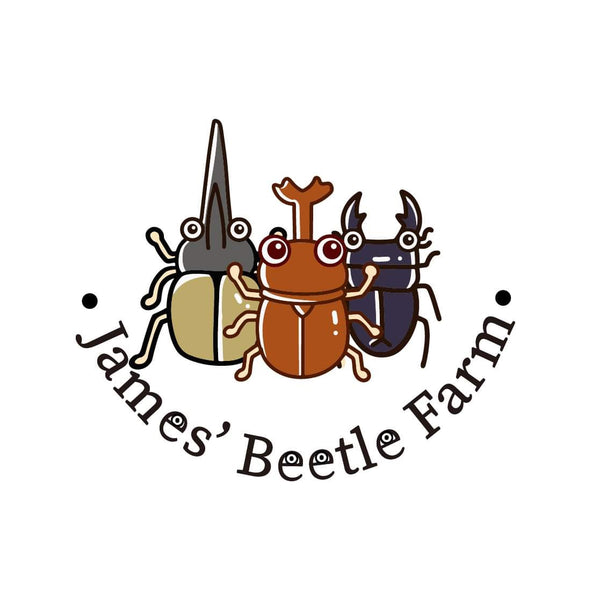James' Beetle Farm
Aegus platyodon platyodon
Aegus platyodon platyodon
Couldn't load pickup availability
Species Summary:
Adult lifespan: 8-12 months
Pupa period: 1 month.
Larva period: Males: 6-9 months, Females 5-8 months.
Breeding difficulty: 4/10
Species Info:
Aegus platyodon platyodon, known as the Star Stag Beetle, is a distinctive stag beetle species native to China
The Star Stag Beetle is relatively small, growing up to 40 millimeters in length. It is
predominantly black, with striking stripes on the elytra that enhance its visual appeal. The
mandibles of major males feature a unique star-shaped protrusion, which is one of the beetle’s most notable features.
The mandibles of Aegus platyodon platyodon are especially remarkable. In major males, these mandibles are equipped with a star-shaped protrusion, which is used for combat with rival males and during mating displays. This feature contributes to the beetle’s impressive appearance and is integral to its behavior.
This beetle is native to China and is typically found in forested areas. It thrives in environments where decaying wood is available, which is crucial for the development of its larvae. The availability of such resources is essential for its life cycle.
In their natural habitat, the larvae of Aegus platyodon platyodon feed on decaying wood. Adult beetles consume a variety of foods, including fruits and tree sap. In captivity, providing a similar diet and a substrate of decomposing wood is important for maintaining their health and well-being.
The adult lifespan of Aegus platyodon platyodon is around 2 years. During this time, the beetles engage in activities such as foraging, mating, and territorial behaviors. Their relatively long lifespan for a stag beetle highlights the need for proper care and environmental conditions.
For enthusiasts keeping Aegus platyodon platyodon in captivity, it is important to replicate their natural habitat as closely as possible. This includes providing a spacious enclosure with
decaying wood for the larvae and a varied diet of fruits for the adults. Ensuring that the
environment mimics their natural conditions will help support their health and successful
breeding.
For enthusiasts keeping Aegus platyodon platyodon in captivity, it is important to replicate theirnatural habitat as closely as possible. This includes providing a spacious enclosure with
decaying wood for the larvae and a varied diet of fruits for the adults. Ensuring that the
environment mimics their natural conditions will help support their health and successful
breeding.
Share








